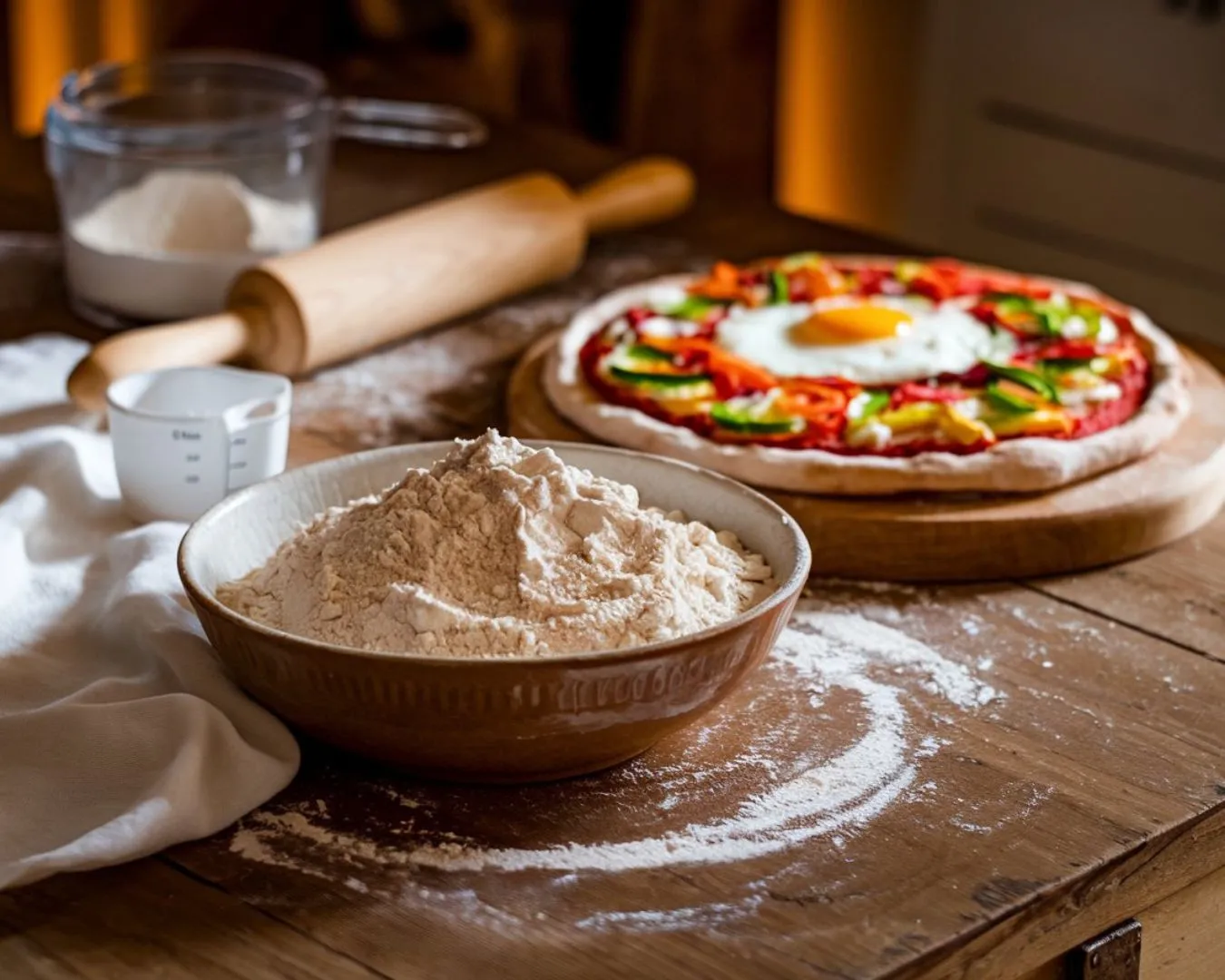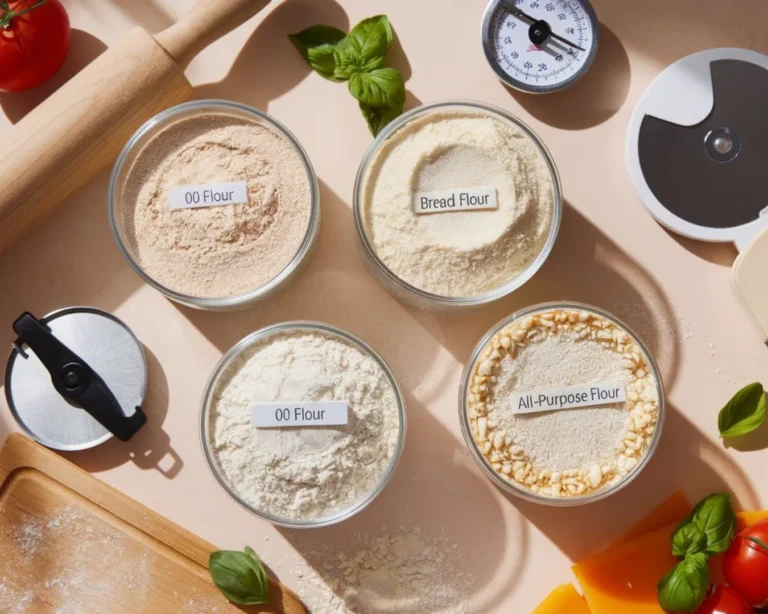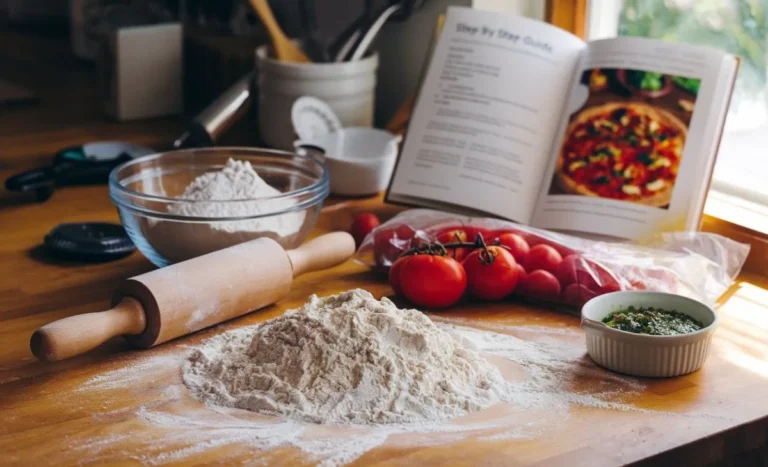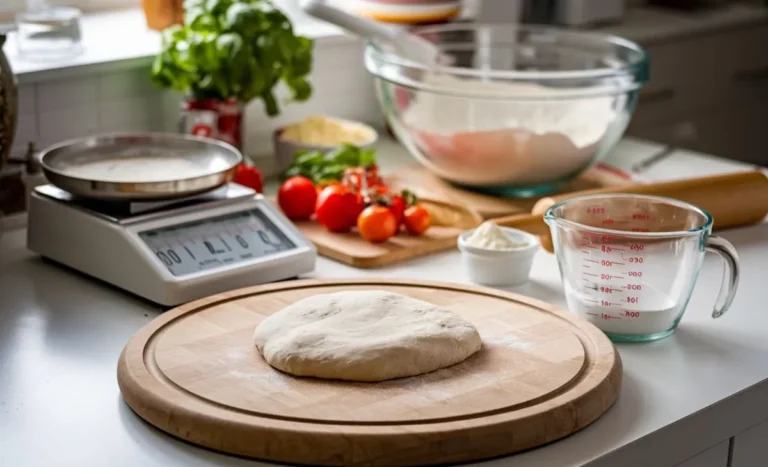Pizza Flour 101: How to Select and Use Flour for Perfect Pizza Every Time
Introduction to Pizza Flour
When it comes to crafting the perfect pizza, the choice of pizza flour is crucial. Different flours can significantly affect the texture and flavor of your crust. Understanding pizza flour allows you to tailor your dough to match your style, whether you prefer a chewy New York slice or a crispy Neapolitan base. Thus, selecting the right flour is the first step toward achieving your pizza dreams.
Various types of pizza flour are available, each with unique properties. For instance, all-purpose flour is versatile but may not provide the desired chewiness. On the other hand, bread flour contains higher protein, which creates a robust gluten structure. Additionally, 00 flour is perfect for authentic Italian pizza, yielding a wonderfully thin and crispy crust. Therefore, knowing these options will help you make an informed decision.
Transitioning from store-bought to homemade pizza can be exciting. Yet, it requires some knowledge about ingredients, especially pizza flour. By experimenting with different types, you can discover which flour suits your palate best. This exploration can lead to delightful results, enhancing your pizza-making skills.
In conclusion, understanding pizza flour is essential for crafting delicious homemade pizzas. With the right knowledge, you can create a variety of crusts that appeal to your taste. So, let’s dive deeper into selecting and using pizza flour effectively in your kitchen!
Understanding Types of Pizza Flour
When it comes to pizza, understanding the different types of pizza flour is essential for achieving the perfect crust. Various flours possess unique characteristics that can impact your pizza’s texture and flavor. By knowing these distinctions, you can select the best option for your desired style. This knowledge lays the foundation for successful homemade pizzas.
One of the most popular choices is all-purpose flour. While it is versatile, it may lack the gluten strength needed for a chewy crust. In contrast, bread flour contains a higher protein content, which contributes to a more robust structure. This makes bread flour ideal for thick, hearty pizzas. Therefore, if you prefer a chewier bite, bread flour may be your best bet.
For those seeking an authentic Italian experience, 00 flour is the gold standard. This finely milled flour allows for a thin, crispy crust, perfect for Neapolitan-style pizzas. Additionally, it has a lower protein content than bread flour, which enhances the dough’s stretchability. As a result, using 00 flour can elevate your pizza-making game to new heights.
In summary, understanding the various types of pizza flour will enhance your pizza creations. Each flour type brings its own qualities, making it crucial to choose the right one. With this knowledge, you can confidently create delicious pizzas that impress your family and friends.
The Role of Gluten in Pizza Flour
Gluten plays a crucial role in the world of pizza flour, influencing the texture and structure of your crust. When flour is mixed with water, gluten proteins form a network that gives dough its elasticity. This elasticity is vital for stretching and shaping your pizza, allowing it to hold its form during baking. Understanding gluten’s role can significantly enhance your homemade pizza experience.
The amount of gluten in pizza flour varies depending on the type of flour used. For instance, bread flour has a higher protein content than all-purpose flour, resulting in more gluten formation. This higher gluten content creates a chewy, satisfying crust that many pizza lovers crave. Therefore, if you’re aiming for that perfect chewy texture, opting for bread flour can be a game-changer.
In contrast, lower-protein flours, such as all-purpose or cake flour, produce less gluten. This results in a softer, less elastic dough, which may not provide the desired structure for your pizza. However, these flours can still be effective for certain styles, such as thin-crust pizzas. Knowing how different flours affect gluten development allows you to tailor your pizza dough to your specific preferences.
In summary, gluten is a key player in determining the quality of your pizza crust. By selecting the right type of pizza flour based on its gluten content, you can achieve the ideal texture and flavor. Ultimately, understanding gluten’s role empowers you to create delicious, homemade pizzas that impress every time.
How to Choose the Right Pizza Flour
Choosing the right pizza flour is essential for creating the perfect crust. Different types of flour offer unique properties that affect the texture and flavor of your pizza. To start, consider the protein content of the flour. Higher protein flours, like bread flour, produce more gluten, resulting in a chewy and elastic dough. Conversely, lower protein flours create a softer texture, ideal for thin crusts.
Next, think about the style of pizza you want to make. For traditional Neapolitan pizza, 00 flour is a popular choice. This finely milled flour has high protein content and produces a light, airy crust. If you’re aiming for a New York-style pizza, a blend of bread flour and all-purpose flour can work well. By understanding the characteristics of each flour type, you can better match them to your pizza style.
In addition to protein content, consider the flour’s absorption rate. Some flours absorb more water than others, which can affect the dough’s hydration levels. For example, high-protein flours require more water to achieve the right consistency. Adjusting your water content based on the flour you choose ensures your dough is neither too dry nor too sticky.
Finally, don’t forget about your personal preferences. Experimenting with different flours can lead to exciting discoveries. Try blending flours for unique textures or flavors. Ultimately, choosing the right pizza flour involves balancing protein content, hydration, and your pizza style. With these tips, you’ll be well on your way to making the perfect pizza every time.
Tips for Storing Pizza Flour
Storing pizza flour properly is crucial for maintaining its freshness and quality. First, choose an airtight container to keep out moisture and pests. Glass jars or heavy-duty plastic containers work well for this purpose. Additionally, labeling the container with the flour type and date of purchase can help you track its freshness over time. This practice ensures you always use the best quality pizza flour in your recipes.
Next, consider the storage location. Flour should be kept in a cool, dry place, away from direct sunlight and heat sources. A pantry or cupboard is usually ideal. Extreme temperatures can alter the flour’s texture and flavor, negatively impacting your pizza dough. If you live in a warm climate, refrigeration might be a good option, but allow the flour to reach room temperature before using it.
Another tip is to avoid buying flour in bulk unless you use it frequently. While buying larger quantities can be cost-effective, flour has a shelf life. Generally, all-purpose and bread flours can last up to one year, while specialty flours may have shorter shelf lives. Regularly check the flour for any signs of spoilage, such as off odors or discoloration.
Lastly, if you have leftover pizza dough, you can store it for future use. Wrap it tightly in plastic wrap and place it in the freezer. This method allows you to enjoy freshly made pizza without starting from scratch each time. By following these tips for storing pizza flour, you’ll ensure that your ingredients remain fresh and ready for perfect pizza every time.
Experimenting with Blends for Unique Crusts
xperimenting with blends of pizza flour can elevate your homemade pizza experience. By combining different flours, you can achieve unique textures and flavors in your crust. For instance, mixing all-purpose flour with whole wheat flour adds a nutty flavor while enhancing the nutritional profile. This combination not only brings depth to your crust but also makes it more satisfying.
Another interesting blend is combining bread flour with gluten-free flour. This mix allows those with dietary restrictions to enjoy delicious pizza without sacrificing taste. By adjusting the ratios, you can create a crust that retains a chewy texture, similar to traditional pizza. This experimentation can also lead to discovering your ideal crust consistency and flavor.
Additionally, consider adding specialty flours, such as semolina or rye. Semolina flour contributes a delightful crunch and golden color to the crust, while rye flour adds a rich, earthy flavor. Mixing these with standard pizza flour can result in a crust that stands out. Remember to adjust your hydration levels, as different flours absorb moisture differently, ensuring a perfect dough every time.
Finally, keep track of your blends and results. Noting the ratios and types of flour used will help you refine your recipe. With practice, you’ll discover a blend that perfectly suits your taste preferences. By experimenting with different pizza flour combinations, you can create unique crusts that transform your pizza nights into something truly special.
Delicious Recipes to Try with Your Pizza Flour
When it comes to creating the perfect pizza, the type of pizza flour you choose can make all the difference. Whether you’re a fan of thin crust, deep dish, or even stuffed pizza, using high-quality pizza flour opens the door to endless possibilities. In this section, we’ll explore a few delicious recipes that highlight the versatility of pizza flour. Each recipe is designed to help you master your pizza-making skills while enjoying a tasty meal.
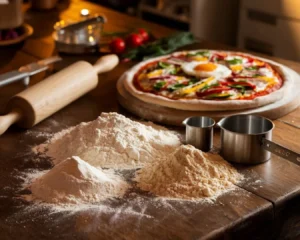
Classic Margherita Pizza
Ingredients:
- 2 cups pizza flour
- 1 cup warm water
- 1 packet (2¼ teaspoons) active dry yeast
- 1 teaspoon salt
- 1 tablespoon olive oil
- 1 cup crushed tomatoes
- Fresh mozzarella cheese, sliced
- Fresh basil leaves
Instructions:
- Activate the Yeast: In a bowl, combine warm water and yeast. Let it sit for about 5 minutes until it becomes frothy.
- Mix the Dough: In a large mixing bowl, combine pizza flour and salt. Add the yeast mixture and olive oil. Mix until a dough forms.
- Knead the Dough: Transfer the dough to a floured surface. Knead for about 8-10 minutes until smooth and elastic.
- Let It Rise: Place the dough in a greased bowl. Cover it with a cloth and let it rise in a warm place for 1-2 hours, or until doubled in size.
- Shape and Bake: Preheat the oven to 475°F (245°C). Roll out the dough on a floured surface. Spread crushed tomatoes, add mozzarella, and top with basil. Bake for 12-15 minutes or until the crust is golden brown.
Veggie-Packed Pizza
Ingredients:
- 2 cups pizza flour
- 1 cup warm water
- 1 packet (2¼ teaspoons) active dry yeast
- 1 teaspoon salt
- 1 tablespoon olive oil
- 1 cup mixed vegetables (bell peppers, onions, mushrooms)
- 1 cup shredded mozzarella cheese
- Italian seasoning
Instructions:
- Prepare the Dough: Follow the same steps as the Classic Margherita Pizza to prepare your dough.
- Sauté the Veggies: In a skillet, heat olive oil over medium heat. Add mixed vegetables and sauté until tender. Season with salt and Italian seasoning.
- Assemble the Pizza: Preheat the oven to 475°F (245°C). Roll out the dough and place it on a baking sheet. Top with sautéed veggies and shredded mozzarella.
- Bake: Bake for 12-15 minutes or until the crust is crispy and cheese is bubbly.
Dessert Pizza with Nutella and Berries
Ingredients:
- 2 cups pizza flour
- 1 cup warm water
- 1 packet (2¼ teaspoons) active dry yeast
- 1 teaspoon salt
- 1 tablespoon sugar
- 1 tablespoon olive oil
- ½ cup Nutella
- Fresh berries (strawberries, raspberries, blueberries)
- Powdered sugar for dusting
Instructions:
- Make the Dough: Prepare the dough using the same method as before, but add sugar to the dry ingredients.
- Roll Out the Dough: Preheat the oven to 475°F (245°C). Roll out the dough into a rectangular shape and place it on a baking sheet.
- Spread Nutella: Bake the crust for 10 minutes until slightly golden. Remove from the oven and spread Nutella evenly over the crust.
- Top and Serve: Add fresh berries on top. Dust with powdered sugar before slicing. Serve warm for a delightful dessert.
These recipes showcase how versatile pizza flour can be. By trying out these delicious options, you’ll not only enjoy making pizza but also impress your family and friends with your culinary skills. So gather your ingredients, and get ready to create mouthwatering pizzas right at home!
Mastering Homemade Pizza: The Ultimate Guide to Choosing the Right Pizza Flour

